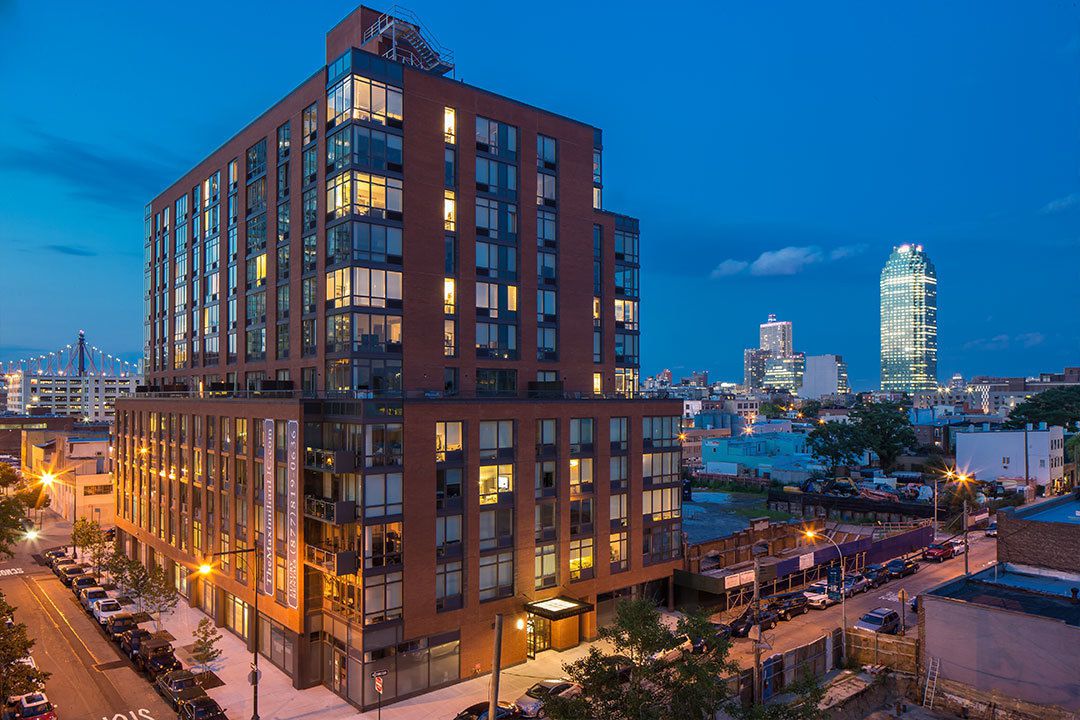
The Maximilian, in Hunters Point, is one of many NYC buildings that uses rental concessions to attract new tenants.
For many New Yorkers, summer is synonymous with renting season — the time to decide whether to renew a lease or move to a new apartment. As rents continue to rise, many landlords are offering concessions and discounts. Currently, 14 percent of rentals across the city are offering concessions in the form of one or two months of free rent, up from 12 percent last summer. Rental discounts have remained steady since last year at 16 percent. But what are the differences between the two, and which saves renters more money?
Our research finds that concessions save renters more than discounts — roughly $100 more per month, especially in more expensive rentals — but come with more caveats, such as having to pay a higher amount each month, losing the free months if the lease is terminated early, and facing a potentially much higher rent when the lease is over.
At StreetEasy, we define a discount as a cut to the rent amount that a tenant pays each month. A concession is an advertised temporary reduction in rent, usually in the form of one or two months of free rent specified in a lease. Unlike a discount, a concession does not change the monthly rent amount. Instead, rentals with concessions list a “net effective rent,” which is the total amount paid in the lease after concessions, divided by the number of months in the lease. (Other types of concessions, such as a waived broker fee or free access to building amenities, were not considered in this analysis.)
For example, a $2,500 apartment that offers one month free on a 13-month contract would advertise a net effective rent of $2,308. Twelve months of rent for a $2,500 apartment would total $30,000, which, divided over 13 months with one free, equals a net cost of $2,308 per month. The renter writes a check for the $2,500 gross rent for each of the 12 months, pays nothing for month 13, and the rent returns to $2,500 after the contract ends.
Concessions Save Renters More Than Discounts, Especially for Expensive Rentals
On average, concessions mean a greater reduction in cost to the renter. The average monthly savings of a concession in New York City is $280, compared to the $183 average savings for discounts. And the average monthly savings of a concession is 7 percent of a monthly rent, while the average discount value is only 5 percent. So concessions can be a great deal, as long as renters plan to stay for the exact length of their lease. If they leave before the lease is over, or remain in the apartment after it ends, they could be paying the high monthly rate without the benefit of any concessions.
Discounts Occur at Every Price Point, While Concessions Are More Common on the High End
Price does not affect a unit’s likelihood to receive a discount, which suggests that there are slow-moving units at every apartment size and price point. But concessions are more likely for more expensive apartments — up to a point. While just 6 percent of apartments priced at less than $2,000 offered a concession in May, 20 percent of apartments with asking rents between $4,000 and $5,000 offered one. The likelihood of concessions decreases once a unit’s rent surpasses $5,000, suggesting that renters looking for the most expensive homes may not be tempted by savings.
Concessions mean more savings than discounts on average at every price point, except for units under $2,000, where the two types of savings are roughly equal. Average monthly savings from concessions relative to rent is higher for more expensive rentals, ranging from 6 percent, or $110, for apartments under $2,000, to 8 percent, or $605, for apartments that cost more than $5,000.
Concessions and Discounts Rise and Fall By Season
Our analysis of the best time to rent in New York City found that discounts spike in the winter and slow down in the summer, moving in the opposite direction as inventory. Concessions follow the same seasonal trend, dropping to their lowest level during peak rental season in the summer and becoming more common in the cooler months, when demand slows down. The actual value of concessions is less seasonal, with average monthly savings ranging between $275 and $295 throughout the year.
Concessions Don’t Mean a Lack of Discounts
Concessions are generally advertised with the building or the unit at the time it goes on the market, while discounts are more often applied to units that have lingered on the market. Apartments with concessions, however, are not any more or less likely to get a discount than apartments without concessions. The prevalence of concessions among rentals with and without discounts is relatively equal (17 and 16 percent, respectively), suggesting that concessions and discounts generally work independently of one another, and serve different purposes for landlords.
Landlords Prefer Concessions Over Discounts
Because concessions are temporary, they can be used to attract renters to a new building, or when there is an abundance of supply in a market. Concessions give the landlord more negotiating power by keeping the rent high and requiring renters to pay higher rents once their lease is up. Discounts give the renter more negotiating power by lowering the actual rent of the unit. Thus, concessions tend to reflect the state of the market overall, while discounts reflect the demand (or lack thereof) for one particular apartment.
How We Did It
We developed an algorithm to search listings descriptions in StreetEasy’s rentals database for phrases indicating that a unit was offering a concession in the form of a free period of rent. We did not include nontraditional concessions such as Netflix packages and discounted amenities. We also did not include the waiving of broker fees as concessions.
We calculated the share of concessions and discounts as a proportion of all rental listings on StreetEasy in May 2018. The ratios of concessions and discounts to price are the mean of the ratios for all listings with concessions and with discounts, respectively.
—
Hey, why not like StreetEasy on Facebook and follow @streeteasy on Instagram?









